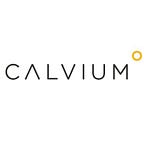From warehouse inventory to health and safety compliance to running entire factories , app tech is all over the manufacturing and engineering space.
Digital transformation firm Capgemini recently surveyed 1,000 senior executives from global manufacturing organizations across nine countries, 62% of who had global revenues greater than $2 billion. The report highlights exactly how big that space is, and how much it’s changing. The respondents resoundingly agreed that by 2020, nearly half of of the global manufacturing industry around the world will run on smart, connected systems. 500 of the 1,000 execs surveyed said they plan to spend more than €100 million each on making it happen.
In a sector driven by tangible results and strict metrics for performance, that’s a lot of investment that needs to provide guaranteed returns.
Black and white benchmarks
To find the value of app technology, engineering and manufacturing firms need a crystal-clear understanding of what the app or app tech is meant to do. What specific tasks is it meant to assist with? How is it going to alter existing processes? And, most importantly — how are those processes performing right now?
Sometimes this isn’t clear from the outset. Often, a third party can help formulate that clarity of thought around how tech can impact on a specific goal, and make ‘be more productive’ into something concrete.
Manufacturing and engineering firms are used to strict KPIs and performance goals: they measure everything . Productivity, time, consistency, fault reporting, material consumption — they’re all hard figures which can be tracked, monitored, compared and reported.
The scale of manufacturing means that small gains soon add up. If an app successfully shaves two working hours off a process simply by automating one stage, and that process is repeated fifty times a day, the productivity gains soon become apparent. A hundred man hours saved means a lot of extra work gets done — the ROI improves exponentially, and the return is seen early on.
This is the most direct way to track or predict ROI in terms of productivity : choose one performance goal — be it time taken, defects identified or health and safety incidents avoided — and monitor that over a set period of time. Time taken divided by performance units achieved equals productivity. Then introduce the app, and see how the productivity figure alters. It’s that simple.
The same basic methodology works for other performance metrics. Specifically tracking overtime hours identifies employees who are working too long (and comparing this figure to average productivity establishes if they’re working too hard — or not hard enough). The key is to start the app development and rollout process with a clear measurement of your current performance, providing the benchmark against which you’ll compare your performance with the app in place.
The challenge of cultural returns
The greater value of app technology lies in its wider context — the impact that it has on company culture. App development is often a departmental endeavour. One department will look for ways to improve efficiency, productivity or profitability: other departments see it and want a turn. Perhaps it starts at the top, with management deciding “we need to go digital” and rolling out a design.
The best app development, however, is a multi-departmental endeavour that brings companies together around a coherent vision and drive for change. It’s not — or rather, it shouldn’t be — something forced on operations by IT and senior management.
This kind of cultural change is harder to measure, particularly in the compliance and process driven world of manufacturing, but it is there. In large organisations, there may be institutionalised methods or standards that have been established at leadership level, but ensuring they’re used consistently throughout the business can be a tall order.
To ensure compliance while remaining positive — instead of picking up on mistakes — requires a cultural shift. How can leadership change people so they have more endurance, more consistency and more enthusiasm for maintaining standards? Apps and app technology can help: they’re a powerful tool for workplace learning — that is to say, teaching, training, and reinforcing key messages.
If you have the capacity to capture a particular business idea and track its impact across departments, looking at how each department appraises the idea’s cost and its impact on business, you can prioritise strategic choices in terms of cost and potential. Do that in an app, and you avoid the disruption of meetings, consultancies and cross-departmental scheduling.
A good app developer isn’t just a technician. They’re a consultant and a creative — they can help engineering businesses ascertain exactly what they’re trying to achieve, and what will improve life for the end user and the business as a whole. Mapping out a strategy is essential, and ROI is the bedrock of that strategy.
Image Credit: (CC) Bruno Sanchez-Andrade, via Flickr
Originally published at https://calvium.com on August 16, 2018.
